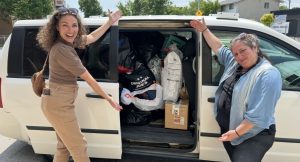As assumptions about Jewish life change, younger clergy face issues their older colleagues never even contemplated
Two years ago, when Rabbi Idan Scher first walked into his shul, the Orthodox Congregation Machzikei Hadas in Ottawa, he encountered a Jewish landscape that was quite different than the one he might have faced if he’d started his career 30 years ago.
That’s because attitudes about Israel, gender identity and even whether to join a shul in the first place have all shifted.
“Even 15 years ago, there was much more the assumption that you were going be involved, that your kids were going to have a Jewish education, you were going to have a shul membership – that was just the working assumption. That’s certainly not the case anymore. There has to be something more compelling than just that working assumption,” Rabbi Scher said.
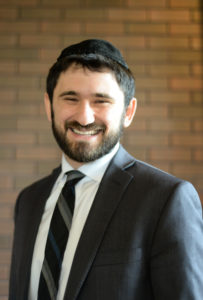
And Rabbi Scher, 28, who was ordained in 2012, is not the only one finding that many assumptions about Jewish life have changed. Rabbis of every denomination ordained within the last decade are facing challenges their older colleagues never contemplated.
While nearly all the younger rabbis interviewed for this story caution that being younger doesn’t necessarily mean they are more progressive or open to change than their older colleagues, they do have certain advantages.
One of those benefits is an ease with social media, said Rabbi Adam Cutler, of Toronto’s Conservative Beth Tzedec Congregation. “It’s not uncommon for people to message me on Facebook. I post on Facebook, that’s the way I communicate. If I have a thought, I write it up and it’s there. I don’t wait for the shul bulletin,” he said.
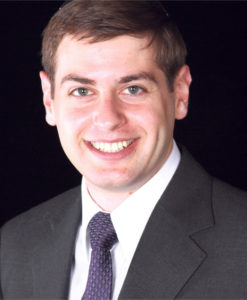
“I engage with congregants in many ways beyond a phone call and a meeting in my office,” said Rabbi Cutler, 34, who was ordained in 2009. He likes to meet with members in a nearby Starbucks, which may be less intimidating than the formality of the synagogue.
The willingness to take Judaism outside the synagogue walls is a trait many younger rabbis share.
Rabbi Raysh Weiss, ordained just this year at the Jewish Theological Seminary (JTS) and newly arrived at Halifax’s Conservative Shaar Shalom Congregation, recalls that as a student rabbi, she once read Megillat Esther for Purim in a bar for young Jewish professionals.
“Coming out of rabbinical school, in this cultural moment, requires a lot of flexibility and thinking out of the synagogue box, literally,” said Rabbi Weiss, 32.
Maharat Rachel Kohl Finegold, who works at Montreal’s Orthodox Congregation Shaar Hashomayim and was ordained in 2013 as a member of the first class of Yeshivat Maharat, holds the occasional Shabbat gathering in a park, complete with food, singing and Shabbat blessings.

“There are many barriers for people to walk into the synagogue. I try to soften those fears or bring the synagogue out of the building,” the 36-year-old maharat said.
Rabbi Miriam Margles describes her role as “healing Jewish wounds.” Rabbi Margles, who was ordained by the Reconstructionist Rabbinical College in 2006 and is the first full-time rabbi hired by Toronto’s unaffiliated Danforth Jewish Circle, said that some of both the Jewish and non-Jewish members of the community have had experiences “of being marginalized or being made invisible… and because of that felt there’s no place in the Jewish community for them or no place in Judaism for them.”
As a rabbi for a grassroots community, Rabbi Margles, 46, finds that part of her role is to help reclaim traditions that were cast off as irrelevant.
“A lot of my work… is enabling Jews and non-Jews to have the tools to engage with Jewish tradition, taking into consideration the truth of our lives, so that includes challenging patriarchy and addressing LGBTQ issues.”
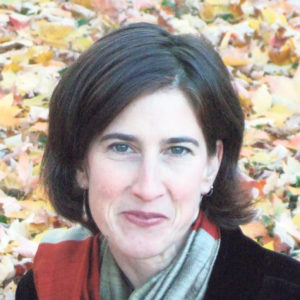
Questions about gender and sexual identity may also be easier for younger rabbis to navigate, because they have grown up in a more tolerant era.
Rabbi Cutler recalls he was a rabbinical student when JTS decided, in 2007, to admit gay and lesbian students.
“It may have been a longer transformation for older colleagues,” he said. “For us, it was self-evident [that] we would be welcoming to members of the LGBT community.”
In Ottawa, Rabbi Scher said that what his generation finds meaningful has changed, as people want to discover how Judaism enriches their and their children’s lives.
“Kids programs are not just about singing and learning the prayers and having a good time. There’s a renewed focus on how will it [Judaism] help enhance my living as a member of a globalized community,” he said.
As an example, he points to his synagogue’s commemoration of Yom Hashoah, which this year will bring together students from different faiths to study what “Never again” means for them, he said.
As the role of a rabbi has shifted – outside the synagogue’s walls and away in some cases from being the mara d’atra, the authority who makes communal decisions – so has rabbinical training. Instead of focusing on the abstract, there is a greater emphasis on giving rabbis the skills to do their jobs in a changed context.
At Hebrew Union College – Jewish Institute of Religion (HUC-JIR), the seminary for the Reform movement, the class on homiletics, the art of delivering a sermon, has now been combined with rabbinic communications, said HUC-JIR president Rabbi Aaron Panken. Rabbis now also learn how to use social media effectively, do media interviews and hold informal dialogues and discussions.
Rabbi Panken, who specializes in Talmud, said even the way he teaches his field has changed.
“I would pick some obscure, interesting passage,” he said. “Actually what I ought to do is pick something a little more relevant to real rabbis, such as how does one help a family in a time of mourning, rather than how does one deal with a lost garment.”
A course entitled “Clinical Pastoral Education,” with hundreds of hours of practical experience counselling people in hospitals and nursing homes and their families, has also been introduced.
Rabbi Weiss, in Halifax, completed a similar program while she was a rabbinical student and worked with an interfaith group in a New York City hospital.
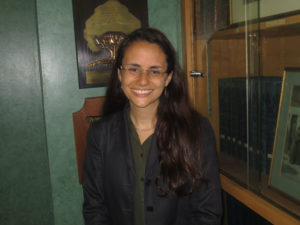
“I think the traditional rabbinic education has historically focused more on facility with texts and Jewish literacy as opposed to the nuts and bolts of pastoral outreach and care,” she said. That’s changing, however, as seminaries add pastoral education to their curriculum, she added.
Conversations about Israel and social justice have also changed for the newer generation of rabbis. At HUC-JIR, Rabbi Panken surveys the rise of the boycott, divestment and sanctions movement, which he said has made Israel advocacy “about a thousand times more complicated than it used to be.”
While students are still encouraged to be involved with social justice under the guidance of faculty, he said, “I do think there is an undercurrent of anti-Semitism that shows up from time to time [in social justice movements].”
Rabbi Scher sees the change as well.
“Many years ago, there was a certain given that there was this unwavering support of Israel [among Jews]no matter what. I see very clearly that may no longer be the case,” he said.
“What you’re hearing on campus and the ideas being peddled on campus are much broader… As a rabbi, just being cognizant of that fact makes a difference from those who came before me.”
Maharat Kohl Finegold said that while she tries to stay away from politics, speaking about Israel is far from simple. “I do try and be sensitive that there are multiple perspectives about Israel,” she said.
For younger rabbis, whose role is often to act as a teacher, establishing themselves in a community can be a challenge.
“Sometimes it’s harder to be a younger rabbi, because people have a picture in their head that maybe includes a greying beard,” she said. “Having a young female, it takes a bit of a leap for some people because it’s not what they grew up envisioning.”
While she has had success working with young professionals, being able to relate to people is not a matter of age.
“I would resist putting it in that box saying the young rabbi is for young people and the older rabbi is for older people. I think that’s a misconception. I’m here for everyone.”
Rabbi Weiss agreed that at first she had some trepidation that she could counsel people who are older and more experienced than she is.
“What I’m learning is that when a relationship is based on love, the ages become less important or visible and it’s more about… building meaningful relationships and community together.”

